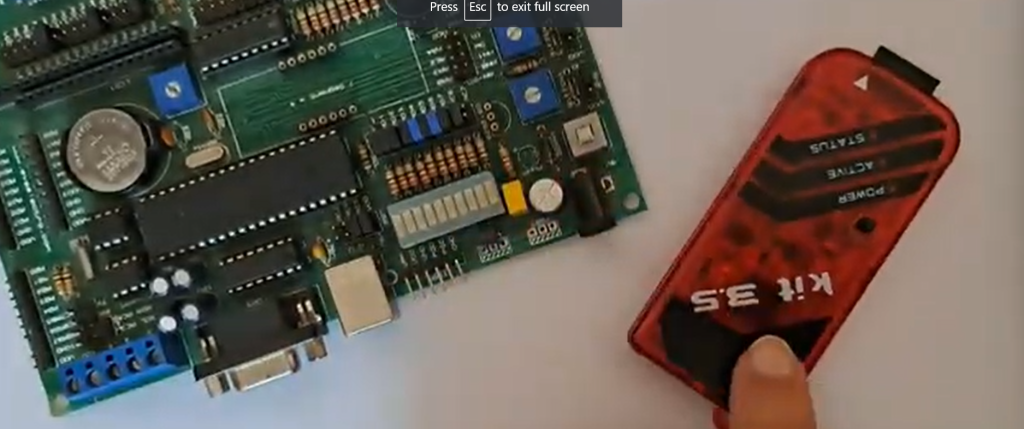
Basic Idea of PICKIT3
The PICKIT 3 is a popular programmer and debugger tool used in the development of microcontroller-based projects, particularly those involving PIC microcontrollers. It is developed by Microchip Technology, a leading provider of microcontroller and semiconductor solutions.
PICKIT 3 serves as a bridge between your computer and the PIC microcontroller, allowing you to program the microcontroller with your code and debug it if necessary. It supports a wide range of PIC microcontrollers, making it versatile for various projects.
Key Features of PICKIT3
Key features of the PICKIT 3 include:
- In-circuit programming and debugging
- USB connectivity to the computer
- Compatibility with MPLAB IDE, Microchip’s integrated development environment
- High-speed programming
- Enhanced debugging capabilities
- Support for a variety of PIC microcontrollers
How PICKIT3 is interfaced with PIC18f4550 microcontroller?
The PICkit 3 can be interfaced with a PIC18F4550 microcontroller using a standard 6-pin ICSP (In-Circuit Serial Programming) connector. Here’s a general overview of how you would interface the PICkit 3 with the PIC18F4550:
Identify Pin Connections: The PICkit 3 and the PIC18F4550 will have corresponding pins for programming and debugging. These pins include VCC, GND, PGD (Program Data), PGC (Program Clock), MCLR (Master Clear/Reset), and VPP (Programming Voltage).
Connect the PICkit 3 to the PIC18F4550: Use a 6-pin ICSP connector cable to connect the PICkit 3 to the PIC18F4550. Ensure that the pins are connected correctly. The pinouts for the PICkit 3 and the PIC18F4550 should be referenced from their respective datasheets.
Launch MPLAB IDE or PICkit 3 Programming Software: Use either Microchip’s MPLAB IDE or the PICkit 3 Programming Software to communicate with the PICkit 3.
Select Device and Connection: In the software, select the target device (PIC18F4550) and the connection method (usually ICSP) that you’re using to interface with the PIC18F4550.
Load Code and Program: Load your firmware or code into the software and initiate the programming process. The software will use the PICkit 3 to program the PIC18F4550 microcontroller.
Debugging (Optional): If you need to debug your code, you can use the debugging features provided by MPLAB IDE or the PICkit 3 Programming Software. This typically involves setting breakpoints, stepping through code, and inspecting variables.
Power Supply: Ensure that the PIC18F4550 has a stable power supply during programming and debugging. The PICkit 3 may provide power to the target device, but it’s good practice to have a separate power supply, especially for more complex circuits.